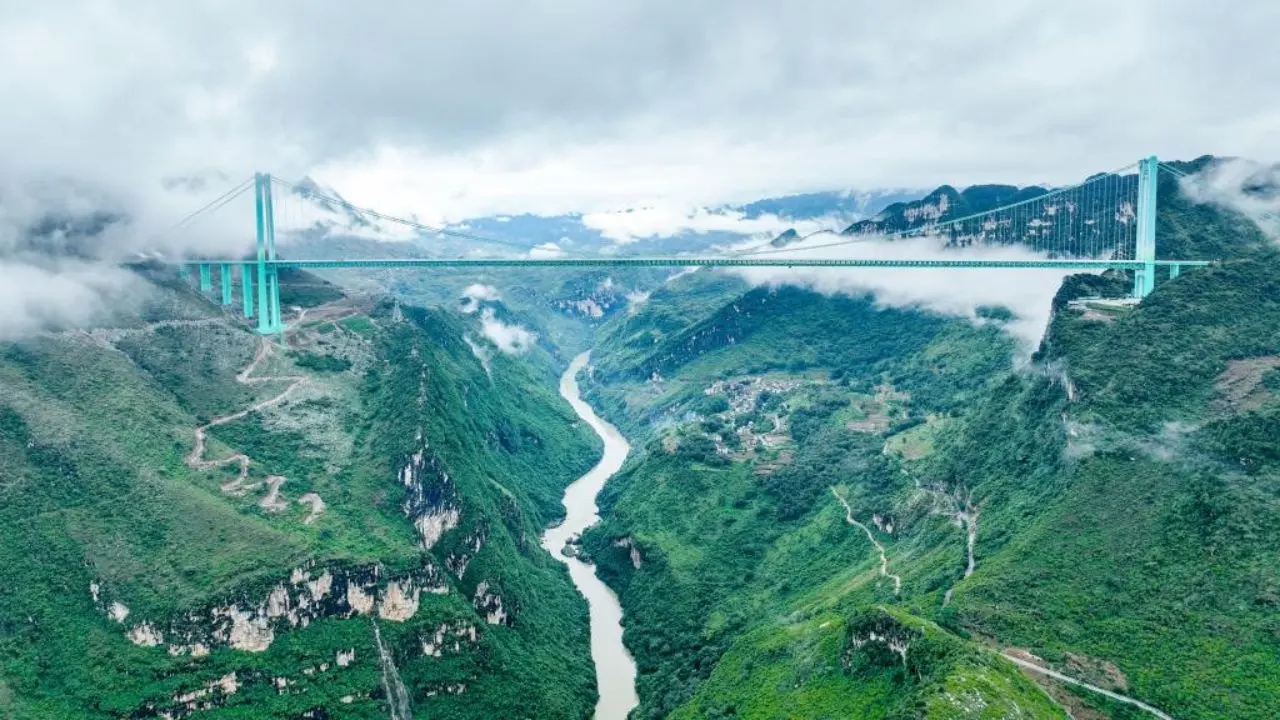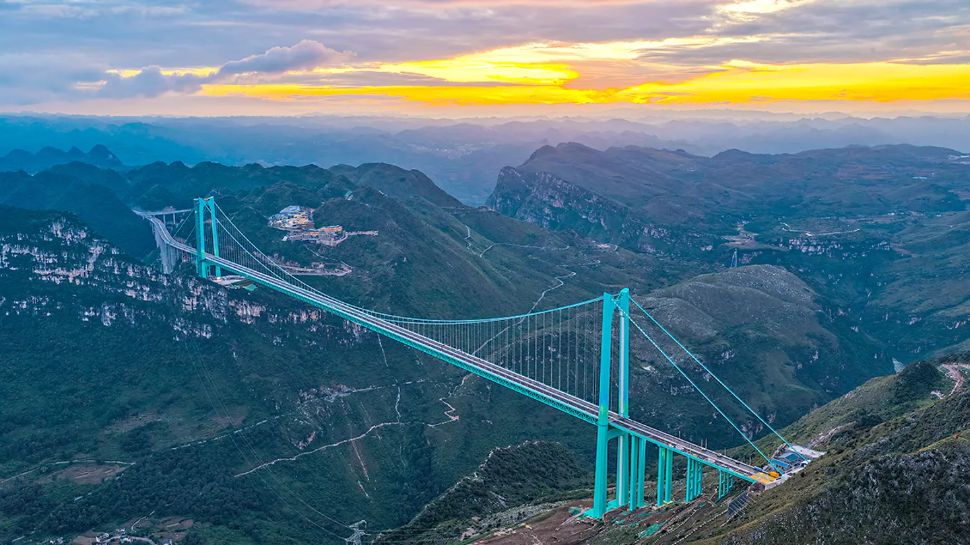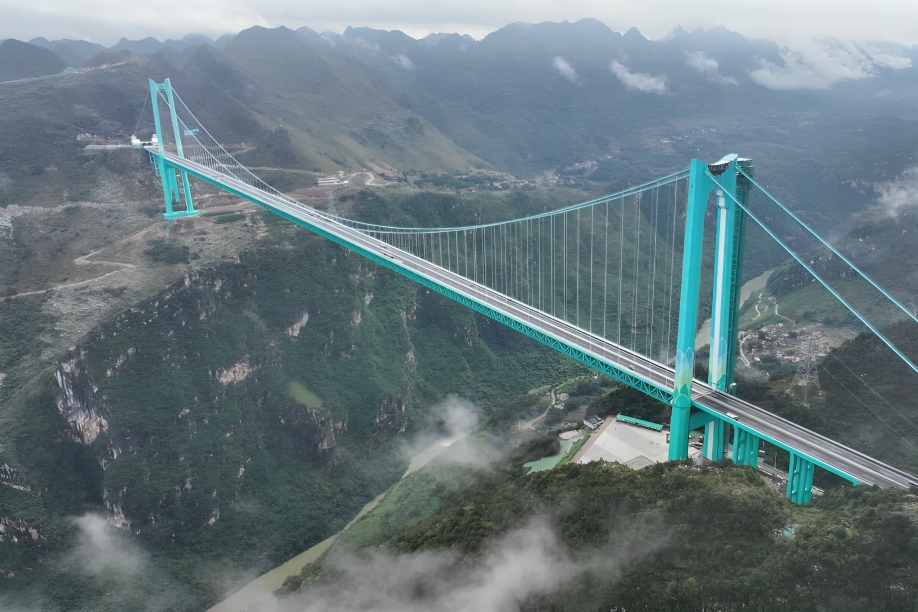When you see the Huajiang Grand Canyon Bridge for the first time, it feels almost unreal. Opened to the public on September 28, 2025, the suspension bridge rises a jaw-dropping 625 metres above the Beipan River and stretches nearly 2.9 kilometres across rugged cliffs, instantly reclaiming its place as the highest bridge in the world. Beyond its engineering brilliance, the bridge has already begun reshaping Guizhou’s landscape by turning a remote region into a thrilling tourist hotspot.

A marvel of modern engineering
Built in one of China’s most challenging terrains, the Huajiang Grand Canyon Bridge stands as a triumph of design and innovation. Engineers had to overcome steep karst topography, unpredictable weather, and extreme load requirements. The bridge’s main span measures about 1,420 metres, supported by twin towers rising 262 metres high. Embedded with live-monitoring fibre optics, the bridge ensures safety and stability even under immense pressure.
But what makes this project stand out is that it is not just an infrastructure link. The Huajiang Bridge doubles as an adventure destination, featuring glass viewing walkways, a high-speed elevator leading to a café on the tower’s top, and even facilities for bungee jumping and slack-lining. It is a stunning blend of transport and tourism, where engineering meets adrenaline.
Changing travel and tourism in Guizhou
The new bridge has cut travel time across the Huajiang Canyon from two hours of winding roads to just a few minutes on the expressway, connecting isolated valleys and improving logistics and accessibility. It is being hailed as a major boost to Guizhou’s economic development, encouraging tourism, creating local jobs, and opening up business opportunities in a region long known for its difficult terrain.
Local travel companies are already promoting packages that include panoramic walks, sky dining experiences, and extreme sports activities on and around the bridge. For visitors who love breathtaking landscapes, it has quickly become a must-see destination, combining natural beauty with world-class engineering.
Balancing innovation and preservation
While the Huajiang Grand Canyon Bridge is celebrated as a symbol of China’s engineering ambition, it also raises questions about sustainability. Environmentalists have expressed concerns over the long-term impact of large-scale tourism on the fragile karst ecosystem of the region. Authorities have assured that eco-friendly measures and strict monitoring systems are in place to protect the natural surroundings while encouraging responsible tourism.
Despite the debate, there is no denying that this bridge marks a new era for Guizhou. It stands as a reminder that progress and preservation can coexist when innovation is guided by awareness.
)
Planning your visit
The Huajiang Grand Canyon Bridge is located in Guizhou province along the Liuzhi-Anlong Expressway. The nearest major cities are Guiyang and Liupanshui, from where visitors can travel by high-speed train or car to the bridge’s visitor centre. The site features observation decks, cafés, and adventure facilities that cater to both thrill-seekers and those simply looking for breathtaking views.
As the world’s tallest bridge, the Huajiang Grand Canyon Bridge is more than an architectural wonder, it is a living symbol of China’s vision to connect people, inspire adventure, and elevate tourism to new heights.
Follow Travel Moves on Instagram and Facebook for more global travel stories, destination insights, and the latest updates from the world of exploration and adventure.








